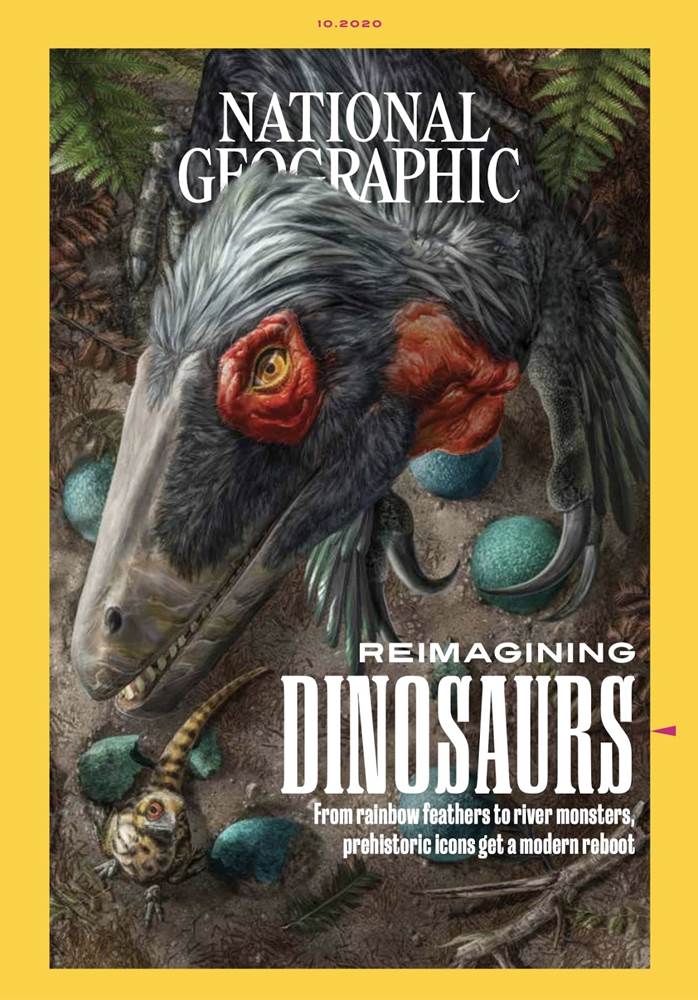When you think of dinosaurs, imagery from Walt Disney’s Fantasia or Stephen Speilberg’s Jurassic Park likely come to mind. Groundbreaking new research has changed everything we thought we knew about how dinosaurs looked and it’s the main attraction in October’s new issue of National Geographic magazine.
What’s Happening:
- National Geographic Magazine’s October issue is reimagining what dinosaurs looked like using recently discovered fossils.
- Recent scientific breakthroughs have revealed the color of the skin of certain dinosaurs and new features we weren’t aware of before.
- Over the past two decades, an average of 40 dinosaurs have been unearthed per year, making the science since Jurassic Park a lot more accurate.
- This new issue looks at dinosaurs as a species of animal while showcasing the latest paleontological research about how dinosaurs moved, hatched, grew, looked, and socialized.
Fun Dinosaur Facts Revealed in This Issue:
- The Spinosaurus is mostly aquatic and has a tail designed for propulsion in water and curved claws more suited for catching prey in water rather than walking on land.
- Deinonychus appears to have had blush eggs similar to those of modern birds, suggesting that their nests were in open-air. The egg coloring and patterning provides them with the ability to camouflage in the open environment. Additionally, this also indicates that the Deinonychus brooded its offspring.
- New research and finds allow us to piece together how dinosaurs developed, matured and reached their enormous sizes, giving us a better understanding of the entire cycle of life of dinosaurs.
- Researchers now know that many dinosaurs had feathers of some kind that came in a variety of colors, based on their fossilized pigments. Other species had patterned skin coloring for display or camouflage.
- Advances in 3D technology are allowing researchers to reconstruct details of dinosaur’s anatomy, including inner ears, brain regions and soft tissue crests, which sheds new light on the mental and sensory abilities of dinosaurs and their capacity for social behavior.
Be on the lookout for this new issue of National Geographic wherever magazines are sold. Click here to subscribe directly from National Geographic.

